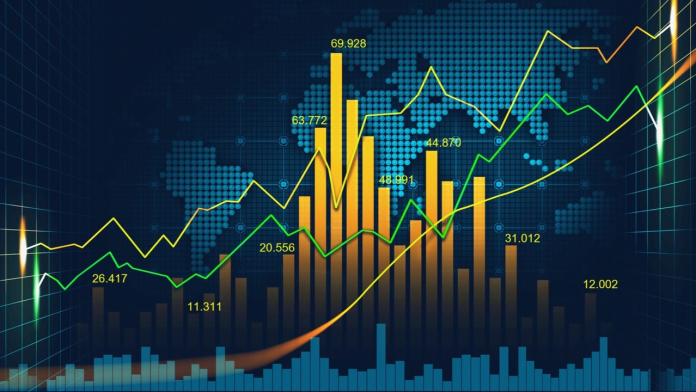Crude oil markets are known for their complexity and volatility, posing significant challenges for traders who aim to optimise their profits on trading platforms. To effectively navigate these markets, it’s crucial to move beyond surface-level observations of price charts and engage in thorough fundamental analysis. Understanding which factors most significantly influence prices can be daunting for traders, mainly those newer to these markets.
This article will delve into the core elements of fundamental analysis essential for trading crude oil on a reputable trading platform. By analysing these key factors, traders can acquire essential insights that help them make informed decisions, fine-tune their strategies, and achieve better results.
Global Supply and Demand Factors
The fundamental balance of supply and demand significantly determines crude oil prices. When supply outstrips demand, prices generally fall, while higher demand relative to supply tends to push prices up. This balance is affected by various factors, including geopolitical developments, economic conditions, and innovations in extraction technology. Disruptions in vital oil-producing regions can cause price spikes, whereas economic slowdowns might lead to reduced demand and lower prices.
Traders must stay updated on global supply and demand trends, which can shift abruptly. By understanding the root causes behind these shifts, traders can better anticipate market movements and adjust their strategies accordingly. Additionally, monitoring supply and demand forecasts from reliable sources can provide insights into market sentiment, which is crucial for making well-informed trading decisions.
Impact of Geopolitical Events
Geopolitical events have a profound impact on these markets. Issues such as conflicts, trade negotiations, and international sanctions can lead to significant price volatility. For instance, unrest in major oil-producing regions often raises concerns about supply disruptions, leading to price increases. Conversely, diplomatic resolutions or increased output from other areas can ease these concerns and cause prices to drop.
Traders should be vigilant about geopolitical developments, which can present opportunities and risks. Understanding how current events might affect their supplies allows traders to position themselves to benefit from market fluctuations. Given the unpredictability of geopolitical risks, maintaining a flexible trading approach is essential.
Economic Indicators
Economic indicators are vital in determining the prices. Metrics such as GDP growth, unemployment, and inflation rates influence oil demand. A robust economy generally drives higher energy consumption, elevating oil prices. In contrast, economic slowdowns usually reduce demand, leading to lower prices. Additionally, currency exchange rates impact the prices.
Monitoring economic indicators helps traders assess the global economy’s overall health and its effect on oil demand. Understanding the relationship between economic performance and oil prices enables traders to predict market trends more accurately and adjust their strategies. Central bank policies, such as interest rate adjustments, can also affect their prices through their impact on economic growth and currency values.
Technological Advances in Oil Production
Technological advancements in production have significantly reshaped the crude oil market. Innovations like hydraulic fracturing (fracking) and horizontal drilling have increased supply, lowered prices, and altered the global energy landscape. For traders, grasping the implications of these technological developments is vital for accurate fundamental analysis.
Keeping abreast of technological progress in oil extraction provides insights into potential shifts in supply dynamics. For instance, new extraction technologies may boost production and reduce prices, while regulatory or environmental challenges could limit supply and drive prices higher. Staying informed about these trends helps traders make more strategic decisions in this market.
Market Sentiment and Speculative Activity
Market sentiment and speculation are often critical yet overlooked aspects of fundamental analysis. Sentiment reflects the overall market attitude, influenced by news, analyst opinions, and broader economic trends. Speculation involves traders betting on future price movements based on their expectations, often leading to heightened market volatility.
Both sentiment and speculation can cause short-term price changes that might not align with fundamental supply and demand dynamics. Traders should evaluate how market sentiment and speculative activity impact prices in the near term. By analysing trading volume, futures contract open interest, and sentiment indicators, traders can better understand the market mood and adjust their strategies to capitalise on potential opportunities.
To successfully navigate crude oil markets on a reputable trading platform, traders need a deep and thorough understanding of various influential factors. These elements, from global supply and demand dynamics to market sentiment, play pivotal roles in shaping market trends. Traders can significantly enhance their decision-making process by carefully incorporating and analysing these factors within their fundamental analysis. This comprehensive approach allows them to anticipate market movements better and positions them to capitalise on opportunities and mitigate risks in the often volatile crude oil trading environment.



 Bitcoin
Bitcoin  Ethereum
Ethereum  XRP
XRP  Tether
Tether  Solana
Solana  USDC
USDC  TRON
TRON  Lido Staked Ether
Lido Staked Ether  Cardano
Cardano  Avalanche
Avalanche  Toncoin
Toncoin